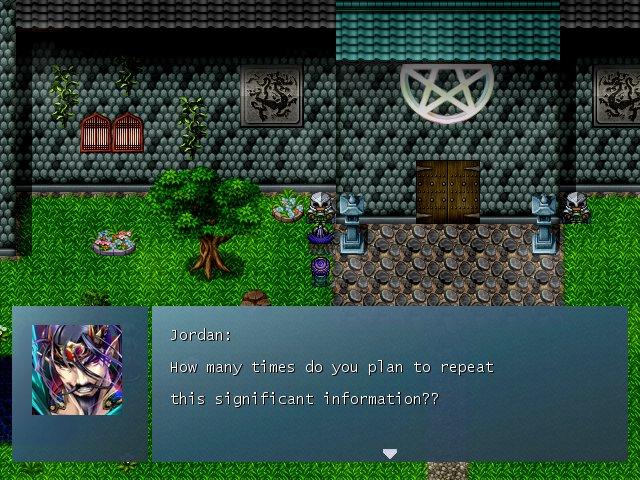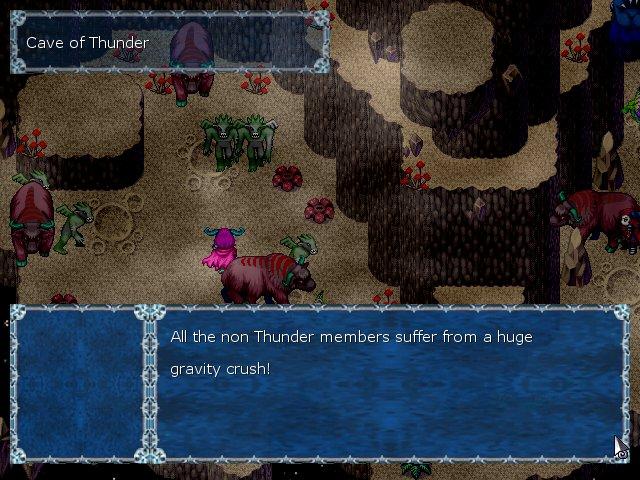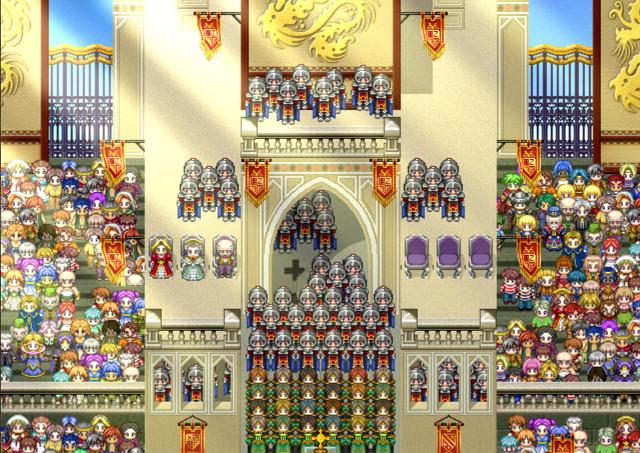- Wondering how to get Monopoly GO! free rolls? Well, you’ve come to the right place. In this guide, we provide you with a bunch of tips and tricks to get some free rolls for the hit new mobile game. We’ll …
Best Roblox Horror Games to Play Right Now – Updated Weekly
By Adele Wilson
Our Best Roblox Horror Games guide features the scariest and most creative experiences to play right now on the platform!The BEST Roblox Games of The Week – Games You Need To Play!
By Sho Roberts
Our feature shares our pick for the Best Roblox Games of the week! With our feature, we guarantee you'll find something new to play!Type Soul Clan Rarity Guide – All Legendary And Common Clans Listed!
By Nathan Ball
Wondering what your odds of rolling a particular Clan are? Wonder no more, with my handy Type Soul Clan Rarity guide.
Millennium 5, Developer Diary #3
For this third entry in Aldorlea’s Developer Diary series, I am going to talk about something that is very dear to me, and in my opinion is an important aspect of the role playing games we all love. Interactivity – in other words, making a world come alive.

For this third entry in Aldorlea’s Developer Diary series, I am going to talk about something that is very dear to me, and in my opinion is an important aspect of the role playing games we all love. Interactivity – in other words, making a world come alive.
Depending on the style of game, it can be a total game changer as far as immersion and gameplay go. Where did I get the idea of talking about interactivity? Well, in Millennium 5, actually.
I was working intensely on the huge and final event of the game, adding tons of different possible branches for dialogs, and I thought to myself: this could be something worth a Developer Diary entry.
Interactivity in the main story
This is probably the hardest to pull off, as it can imply big changes in the game. Or rather, new places to make and new situations to develop. In my 2012 game The Book of Legends, very early on you could kill a potential playable character. This obviously affects the entire rest of the game (which means, a lot!) Without this character, dialogs are going to be different, sometimes places you can visit are going to be different too, and overall your interaction with the world is changed.
Another example is allowing the player to choose the “good” or “evil” path. If the game is well made, quests are not going to be the same. Dungeons accessible for a good character won’t be for an evil one, equipment will be different, etc.
As you can imagine, the work of the developer is considerably augmented.

“Small details can make a big difference in how your world feels alive” – The Book of Legends
Interactivity between characters
This is something that is, let’s say it, useless, or rather optional; but that players love, so do not overlook it! Typically it is about testing which characters you have found and therefore having different sequences of dialogs depending on that. One way to do it is to check who is in the party, but it’s not so easy because sometimes a character is not in the active party but still with you. So you need a bit of coding to actually test if the character is there with you, and if so, he/she should talk and reveal a bit of his/her personality. While it can be a bit tedious to manage, this enriches your game a lot, giving a new dimension to your characters and a sense of reality to your world.
In my most epic games, such as the Laxius Force and Millennium series, I tried to make sure no one was overlooked, i.e. I did not feature one-dimensional but multi-dimensional dialogs. Shy characters (such as Benoit in Millennium) may logically have fewer lines, but an optional character is not necessarily shy and should be vocal, ideally.

“With more than 40 characters and 100 side-quests, this game is one of the most interactive I’ve ever made” – Laxius Force III
Interactivity with NPCs and objects
Want a world that feels deep and alive? Make non-playing characters that are interactive. They should not only evolve with the quest, but also react to your characters. Case in point, a guard that tells you “don’t talk to me, I’m on duty”: what if you talk to him again and again and again? Well, most games will just have him repeat the same lines. You can do better. Have him say something like “what did I just tell you?” the second time. You can then develop even 5-6 different replies. Keep it funny! Your players will laugh like mad and feel closer to your game, more immersed in your world… they will remember such attention to details (a great way to stand out!) and will come back for more. The same thing is true of the non-living elements. Your heroes are explorers, so they most likely have responses to what they see around them. They just found a terrible sword in a chest? Have them comment on it! That can even trigger a full optional dialog.

“Will you interact with the audience or just your enemies?” – Millennium 5
In Millennium 5?
Well the “huge” events that I was talking about actually involve tons of characters, both on the protagonist and antagonist sides. Marine has 12 friends trying to help her achieve her goal, and they all react differently depending on whether their venture goes well, sinks like the Titanic, or Destiny has still to reveal which side will win. Personalities are revealed in the heat of the moment, and clashes may even occur! Without risking spoiling anything, the amount of branches in the dialogs is huge. But hopefully it is for the best. An interactive game is more fun. Feels more real. So to all RPG developers, don’t go down the lazy road. Add a myriad of details, players will love it.
Millennium 5 – The Battle of the Millennium is Aldorlea’s upcoming release, and the final chapter in this popular episodic series of role-playing games. Additional information, including sneak peeks, can be found about it at the following link: http://www.aldorlea.org/officialsite/phpBB3/viewforum.php?f=208
More articles...
Monopoly GO! Free Rolls – Links For Free Dice
By Glen Fox
Wondering how to get Monopoly GO! free rolls? Well, you’ve come to the right place. In this guide, we provide you with a bunch of tips and tricks to get some free rolls for the hit new mobile game. We’ll …Best Roblox Horror Games to Play Right Now – Updated Weekly
By Adele Wilson
Our Best Roblox Horror Games guide features the scariest and most creative experiences to play right now on the platform!The BEST Roblox Games of The Week – Games You Need To Play!
By Sho Roberts
Our feature shares our pick for the Best Roblox Games of the week! With our feature, we guarantee you'll find something new to play!Type Soul Clan Rarity Guide – All Legendary And Common Clans Listed!
By Nathan Ball
Wondering what your odds of rolling a particular Clan are? Wonder no more, with my handy Type Soul Clan Rarity guide.







